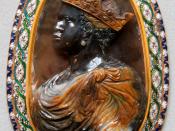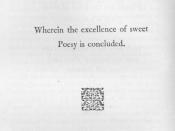The sixteenth century was a time of great scientific, historical, religious and artistic upheaval. Without the benefit of computers, Television, Radio or Nosy Neighbours, much dissemination of social codes and conventions, stories, fables and legends, came from ballads of sonnets. Literacy ballads and the like were a basic format of song, with an emphasis on action rather than character, that told a story, usually concerning some social phenomena, such as romantic relationships, cheating wives or husbands, and sometimes work trades, such as ploughmen, Carpenters, etc...
Traditionally most sonnets dealt with the theme of romantic love and in general, referred to a mistress, friend, or a familial relation. The two ballads discussed here show to highly contrasting themes of 16th Century rural life: Romance and Love, and Justice and social interaction. The second focusing on how conflict between individuals might have been dealt with, or resolved.
"Astrophil and Stella"
One of the most famous, and important artistic creations 16th Century English culture gave birth to was Sidney's sonnet sequence called "Astrophil and Stella". The sequence is about a man, Astrophil who is attracted to and in pursuit of a married woman, called Stella. On stealing a first kiss from Stella whilst she is asleep Astrophil worries about her reaction if she should find him out, but later on kicks himself for not taking advantage of the situation. He then goes on to recount how he is filled with hopes one minute and despair the next, whilst trying in vain to pursue her. In constantly being refused, he feels angered and offends her but does not wait too long before trying to seduce her yet again. After a few more refusals he is moved to desperation, evoking his misery in the last few sonnets.
Astrophil's actions seem to...


